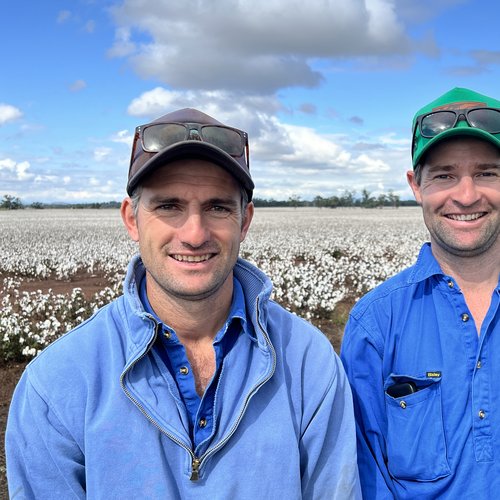Sugar Research Australia’s NIR support engineer, Joel Simpson, has introduced the industry to the latest developments in handheld micro near infrared (NIR).
The portable NIR device can be used with Bluetooth on a laptop, a tablet or a mobile phone in the lab, at the mill or in the field.
SRA is collecting and examining calibrations to determine the different ways the handheld could be used in the industry. Progress has been principally made in cane stalk maturity, so far.
SRA’s NIR team – service leader Steve Staunton, NIR developer Phil Lethbridge, Joel Simpson and new member, NIR support engineer Liam Haydon – have processed NIR data and lab data collected by the mills and found all cane varieties in all places show the same relationships between moisture, fibre and Brix.
This has enabled a sugar cane maturity model to be created which features three axes: soluble solids (Brix), non-soluble solids (fibre) and moisture (water). If you know where the cane plant is in its maturity along the axis by calibrating Brix it is possible to know the other two – fibre and moisture.
In the growth phase the plant makes cellulose but as it gets more mature it starts to create sucrose as a response to moisture stress, and eventually it starts to degrade.
The maturity model shows a distinct point of optimum maturity where sucrose is maximised.
“If you know where you are along the curve it gives you an idea of how close you are to the optimum target due to the fundamental nature of cane,” Joel said.
“We wanted to find out what the minimum number of scans of the plant we’d have to take for a reading to be statistically meaningful.
“We’ve scanned all the internodes on samples and then cut the cane and ran it through a small mill to measure brix, training the handheld NIR unit using our calibrations.
“We found if you take the third internode from the ‘cabbage’ (leaves at the top) and the third internode from the bottom and make two scans you can calculate the average accurately.
“These are the calibrations we developed in February this year. We are now starting to use the handheld with accurate results. District Manager North Queensland, Gavin Rodman and District Manager Central Dylan Wedel – are starting to make decisions with it in the field with promising results.
“Because of the unchanging cane maturity relationships, the NIR handheld can also be used for determining irrigation and plant growth regulator applications, too.
“We are now looking at soil and mill mud nutrient applications which look promising – but it is still early days.”
Micro NIR is already installed at Tully Mill on the mud hopper to get a better understanding of the nutrient/mass ratio.
SRA’s ‘Delivery of a pest and disease diagnostic step change for the sugarcane industry project’ is also progressing.
This project is investigating the use of NIR on processed cane as an automated method to assess RSD status in every rake of cane entering the mill.
The anticipated outcome of this project will be that growers will receive the RSD status of each rake with their cane payment information and will be able to make informed decisions about RSD management based on the data.
The regional sugar milling research seminars were held at Mackay, Condong, Bundaberg, South Johnstone and Townsville in March and April.




